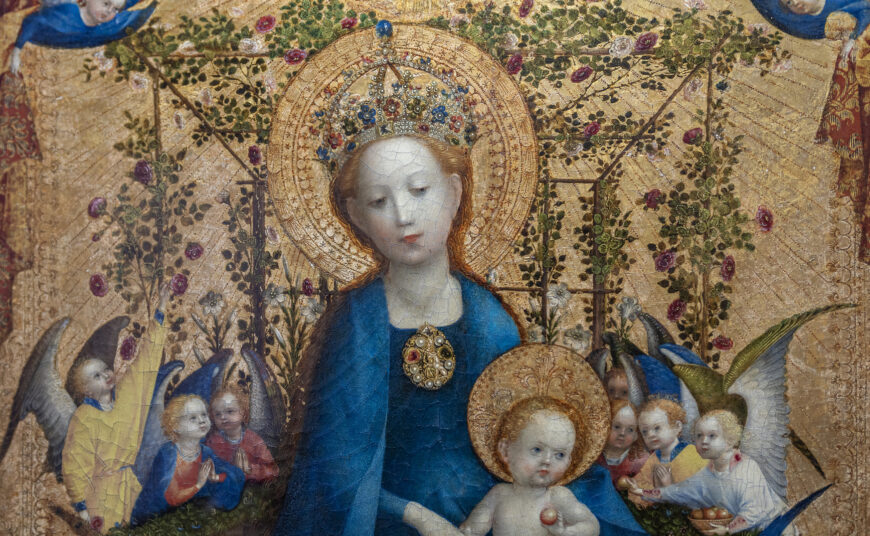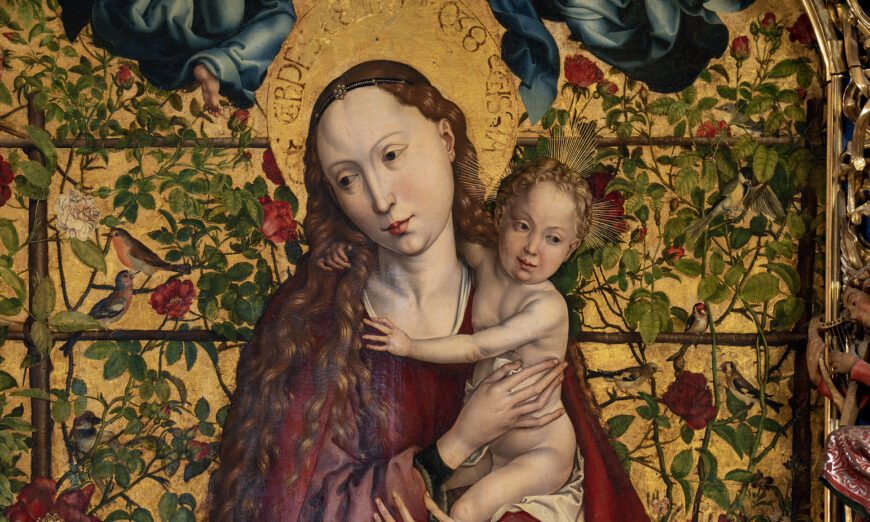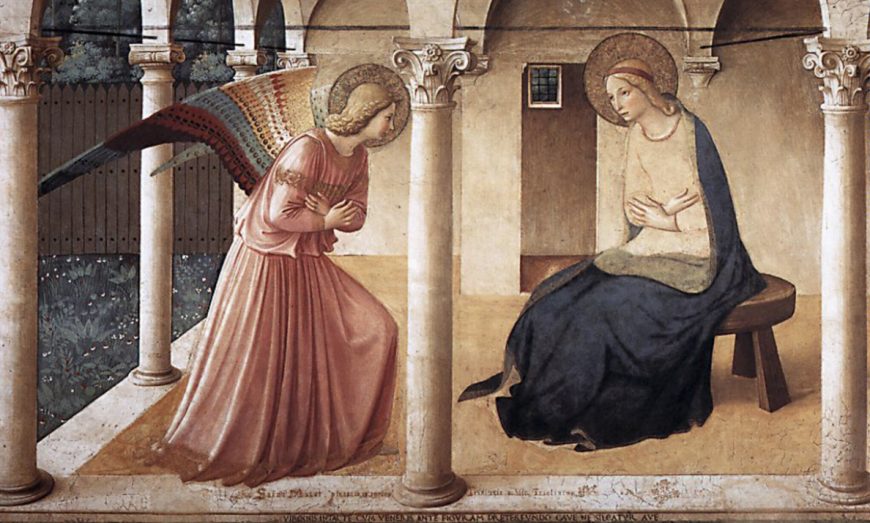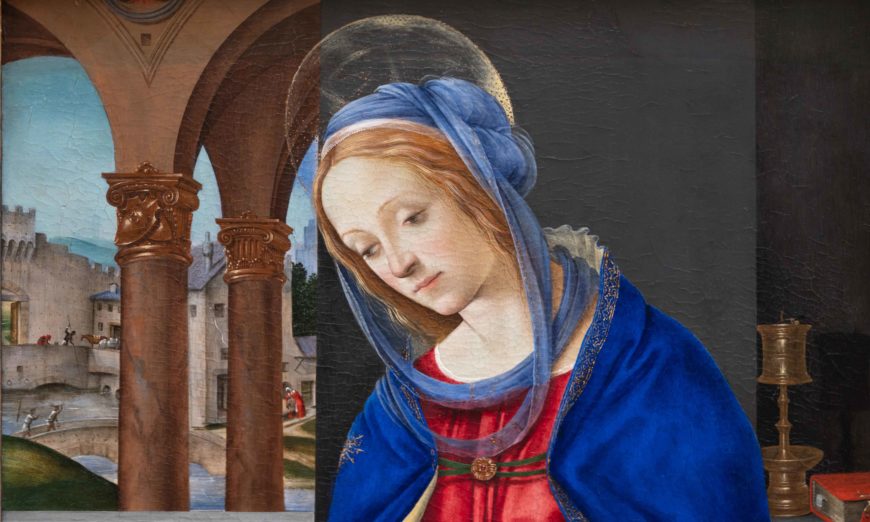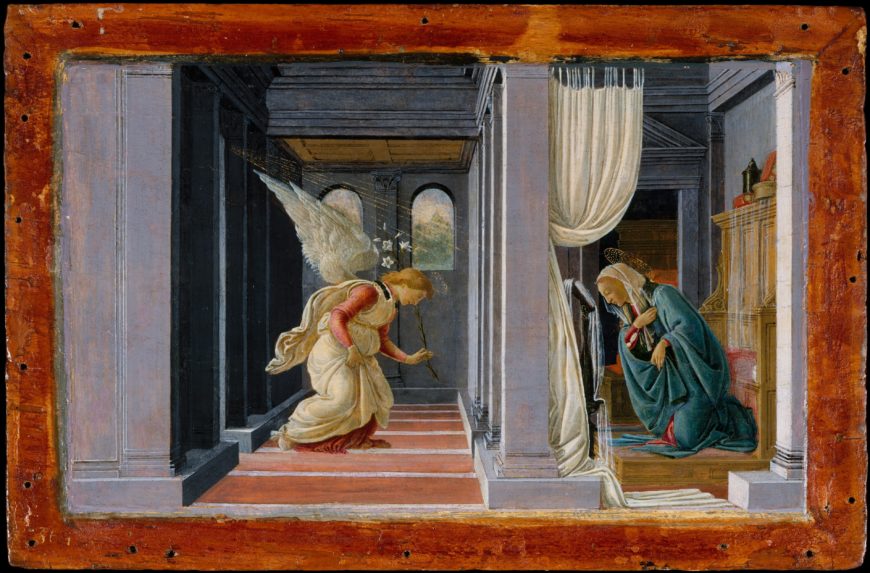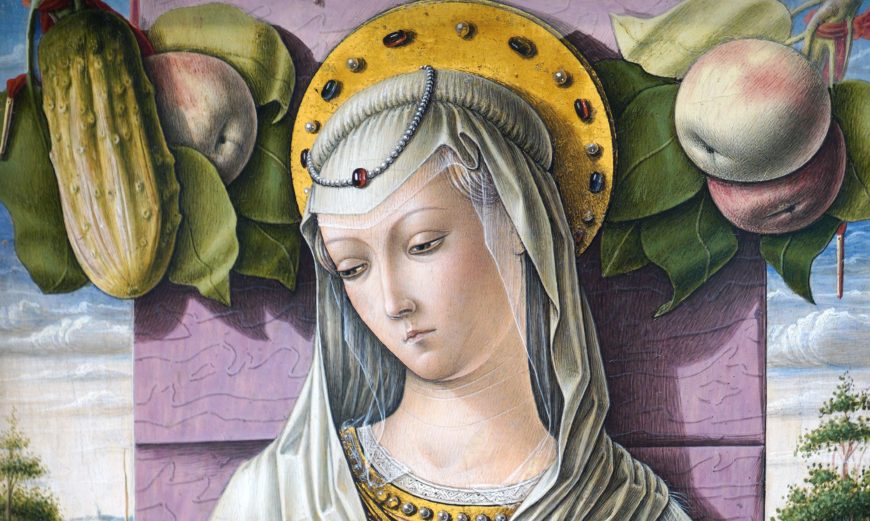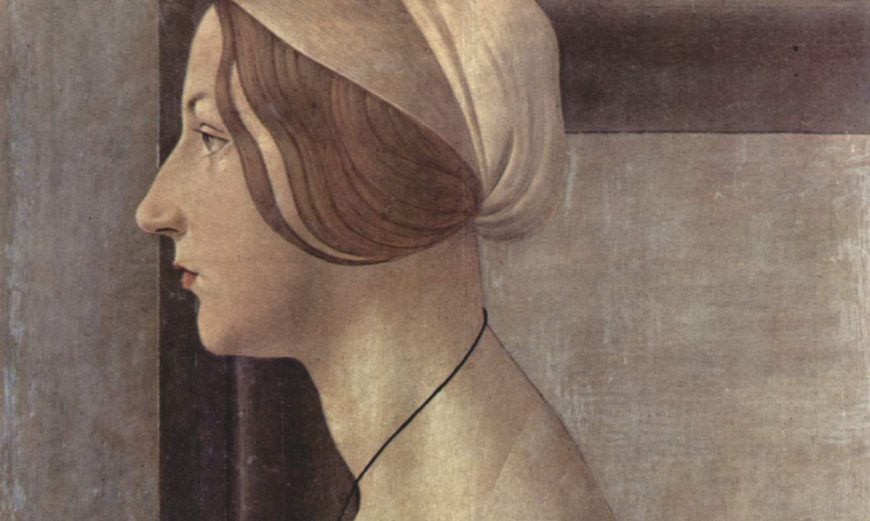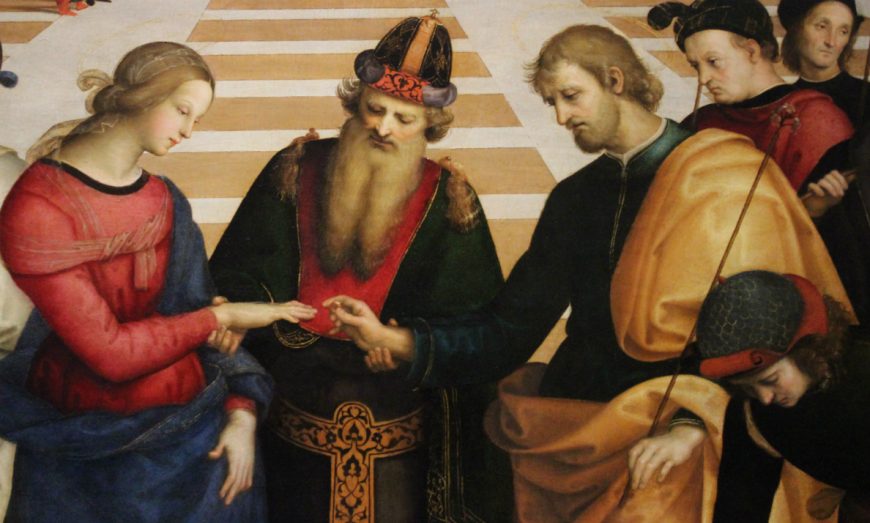Andrea Mantegna, Dead Christ, tempera on canvas, c. 1480–1500 (Pinacoteca di Brera, Milan)
[0:00] [music]
Dr. Steven Zucker: [0:05] We are in the Brera Pinacoteca in Milan, looking at one of their most famous paintings. This is Andrea Mantegna’s “Dead Christ,” one of the most vivid and emotionally impactful paintings in this museum.
Dr. Beth Harris: [0:18] We are standing at his feet, looking across his body. There’s almost no space around the slab that he’s lying on.
Dr. Zucker: [0:27] Now, Mantegna is known for experimenting with radical perspectives and foreshortening, and this is a tour de force. Those feet, those toes, are within our reach.
Dr. Harris: [0:38] We’re seeing Christ, it seems, lying on the Stone of Unction, the stone that his body was laid down upon in order that it could be anointed by Mary Magdalene and others before it was put into the tomb. One of the figures that we see on the left is likely Mary Magdalene. We see her typical attribute of a jar of ointment that she would’ve used to anoint Christ’s body on the right corner.
Dr. Zucker: [1:04] This painting is all about the physicality of Christ. Our eyes rise up the cloth that covers his body, delineated by light and shadow, until we get to the torso. Then, we continue over the convex shape of his chest.
[1:20] As our eye moves even further into the deep space of this painting and we look onto that face that suffered so much but now seems at peace, we finally see a reference to Christ’s divinity. We see that halo.
Dr. Harris: [1:34] It’s very likely that Mantegna used a cadaver as a model when he painted this. There is a sense of physical death here, which reminds us that God became a man to give his life for the sins of mankind.
[1:49] We’re reminded so vividly of that suffering. We can see wounds in his hands, in his feet, in his chest. His hands even seem propped up to show us those wounds.
Dr. Zucker: [2:01] Look at the way in which Mantegna has painted those wounds. They’re not just bloodied holes, they are wounds that have dried over time. There’s a physicality that we can recognize.
Dr. Harris: [2:11] When we normally see images of Christ before the tomb — in images of the Entombment, for example, or the Lamentation — we often see his body horizontally laid out, and we often see it held upright before the tomb or rising out of the tomb. And so this is very different.
Dr. Zucker: [2:31] The proximity that is achieved by this composition is meant to intensify its emotional impact. It’s meant to invite us to mourn. The figures to the left are, in a sense, providing us with a model for that mourning. We are to take on their sorrow.
Dr. Harris: [2:48] This was painted a few decades before Mantegna’s death, but it remained in his possession until he died. There is wide agreement among scholars that this painting had personal significance for him. There’s no record of a commission, and so perhaps it’s something that he painted for himself.
Dr. Zucker: [3:06] In fact, one art historian has suggested that this may have been painted in response to the death of two of his sons.
Dr. Harris: [3:13] Increasingly in the Renaissance, we’re more and more invited to put ourselves in the place of biblical figures — of Christ, of Mary, of the saints — to meditate upon their suffering in a very detailed way. This is a contemplative image.
Dr. Zucker: [3:32] It’s important to remember that, because some have spent a good deal of time dissecting the perceived inaccuracies of the composition. You’ll notice that Christ’s feet are small in relationship to the size of his head. And I think the objective here was not visual accuracy, it was emotive accuracy.
[3:49] The power of this painting has been felt by artists for centuries. It has had a tremendous impact on subsequent work.
Dr. Harris: [3:57] There are so many images of Christ foreshortened that come after this that are so clearly influenced by Mantegna, but only one or two before this that show a figure that’s even remotely close to the kind of foreshortening that Mantegna gives us here. I wonder how Mantegna felt looking at this image, painting this, thinking about this promise of an eternal life through Christ’s suffering.
Dr. Zucker: [4:22] There’s no relief for the intensity of this vision.
[4:25] [music]



